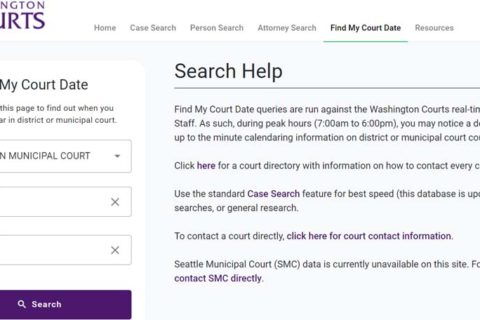A 414(h) plan is a plan which is offered to government employees to grow their savings through a tax-advantaged way for their retirement. This may be your first time to hold a W-2 form and there is 414(h) on it. For your information, as explained on the IRS site, employers who are engaged in a trade or business who pay remuneration, including non cash payments of $600 or more for the year for services done by an employee need to file a Form W-2 for each employee. However, what is the meaning of 414(h) on a W-2 form? You are able to read the explanation related to 414(h) below.

About 414(h) Plan
A 414(h) plan is a retirement account which is sponsored by an employer and it is available for public employees who work for the state, federal, or local government. As explained on the Bankrate, employees and employers are able to give contributions to a 414(h) plan. Employees give contributions in a fixed dollar amount or a percentage of their income as set by the employer.
The contributions of employees are taken by the employer, excluding them from the gross income of the employee for the year. Payroll taxes of 7.64% can be avoided by employees for Social Security and Medicare because the contribution is not counted as income.
It is also explained on the Bankrate that contributions to a 414(h) plan are able to grow tax-deferred until withdrawn in retirement where it is defined as after age 59 ½. And then, withdrawals are taxed as income at ordinary income tax rates.
When the employees decide to leave, they are able to take all the money in the account. Is there any income restriction for 414(h)? No, this plan has no income restrictions which means that employees who are qualified are allowed to take part regardless of their income.
The Meaning of 414H on W-2 Forms
On a W-2 form, there is 414(h). In the box 14 of the W-2 statement, there is a dollar amount with the 414(h). What does it mean? As explained earlier, 414(h) is a retirement plan sponsored by employers for people who work in government. So, in the box 14 of the W-2 form, the number is the funds that were contributed to the retirement plan. For your information, the 414(h) funds are not taxable, so it means that they are removed from the paycheck and put in the special retirement savings account before the taxes are assessed.
Withdrawal of Money from a 414(h) Plan
When the employees are 59 ½ years old, they are permitted to withdraw their money from the 414(h) plan and a penalty is not incurred. If the employees want to withdraw the money before they are 59 ½ years old, they are able to do that, but income taxes will be incurred and also a penalty of 10%.
If the employees withdraw the money early because of certain reasons, such as if they are military reservists who are called to active duty, unreimbursed medical expenses exceeding 10% (7.5% according to Finance Strategists) of their adjusted gross income, higher education expenses, or public service position after age 55 or 50 for certain positions, a penalty will not be incurred.
Employees Who Have a 414(h)
Does everyone have 414(h) on their W-2 forms? No, the ones who have 414(h) code on their W-2 forms are government employees who are part of tax-deferred retirement plans. Other employees such as those who work in education institutions may have 403(b), whereas those who work in private institutions may have 401(k).
The Difference Between Tax-Free and Tax-Deferred
What is the difference between tax-free and tax-deferred? A tax-deferred plan is not taxable when the money is put into savings, but when the money is removed, it will be considered taxable income. So, if you use your 414(h), you will have to calculate the amount which is used for taxes along with your living costs.
How about a tax-free account? This is an account which is never taxed, but in the United States, this account is seldom to be found.
The Things That Will Happen If an Employee Leaves the Job
Let’s say that an employee changes his or her job. If so, she or he can leave his or her money in the 414(h) plan or she or he can move it to a new employer’s qualified plan or an IRA with a rollover. If the employee decides to choose the rollover option, she or he has two options, namely a direct rollover and indirect rollover. Do you know the difference between a direct rollover and indirect rollover? Here is the explanation according to the Bankrate for you.
-
- Direct Rollover
Here, you are able to request that the assets in your 414(h) retirement account be transferred to another retirement plan.
-
- Indirect Rollover
If you choose this option, you will have to withdraw the money from the account and then deposit it into another retirement account. In this option, you have 60 days to complete the transfer. If you cannot complete the transfer in 60 days, you will have to pay a 10% early withdrawal penalty beside the income taxes for the amount.
Some Advantages of 414(h) Plan
There are a number of advantages offered by a 414(h) plan. If you are someone who will participate in this plan, you need to know the advantages of the plan first so that you know what you will get.
-
- There is no income limitation.
In a 414(h) plan, there is no income limitation. No matter the amount of your salary, you are able to participate in this plan.
-
- There are pre-tax contributions.
Your taxable income is reduced. It happens because the money is directly taken from a paycheck pre-tax. So, it does not only reduce income taxes, but also payroll taxes for Social Security and Medicare.
-
- Contributions are vested automatically.
It means that you will not have to wait for the contributions to be yours.
-
- Your incomes on your account grow tax-deferred.
Your money in your 414(h) retirement account will grow without immediate tax obligations. Your money will not also be taxed until it is withdrawn.
Some Disadvantages of a 414(h) Plan
This plan has a number of advantages as you have read above. However, this plan also has a number of disadvantages that you can check below.
-
- There is a penalty if you withdraw early.
If you withdraw your money before you reach your retirement age, you will be charged quite a large fee. You will owe income tax on the withdrawal and also be charged with a 10% bonus penalty.
-
- Contributions are less flexible.
In this plan, employers are the ones who determine the contribution amount. So, it is less flexible for the employees. Meanwhile, other retirement plans, such as 401(k) or IRA, allow the account holders to contribute as much as or as little as they want.
-
- This plan is not eligible for Saver’s Credit.
This plan is not eligible for the Saver’s Tax Credit or the Retirement Savings Contributions Credit. The tax credit is made to push low to moderate income taxpayers to save for retirement.
-
- This plan is only available for government employees.
A 414(h) is only offered to the government employees which means that if you do not work in a government, you cannot take part in this plan.

A bookworm and researcher especially related to law and citizenship education. I spend time every day in front of the internet and the campus library.





